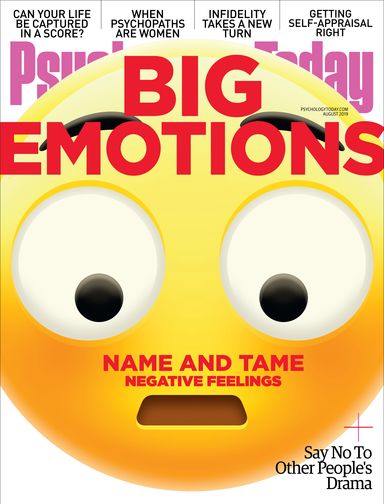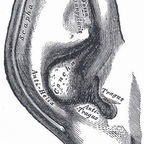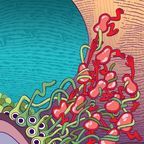https://www.psychologytoday.com/us/blog/the-athletes-way/201705/new-mri-study-leads-roadmap-bipolar-brainsNew MRI Study Leads to Roadmap of Bipolar Brains | Psychology Today
-
Personality
Personal Growth
Relationships
Family Life
View Help Index
Do I Need Help?
Recently Diagnosed?
Talk to Someone
Mental Health
Protect Yourself from Emotional Contagion
Whether it’s joy or anger, we’re wired to catch and spread emotions. Here's how to inoculate ourselves against negative ones.
Essential Reads
Trending Topics
News
New MRI Study Leads to Roadmap of Bipolar Brains
International MRI meta-analysis creates first global map of bipolar disorder.
Posted May 02, 2017
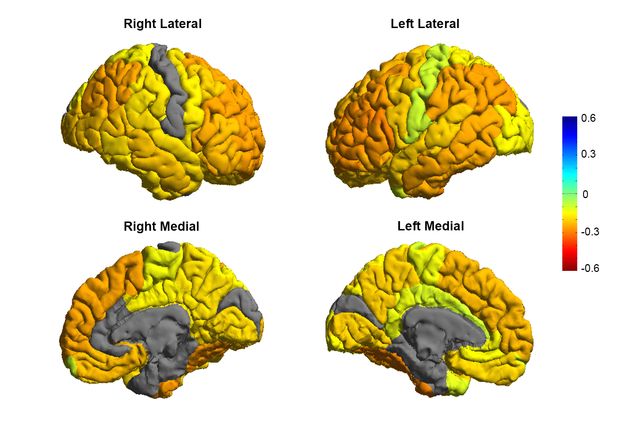
Bipolar patients tend to have gray matter reductions in frontal brain regions involved in self-control (orange colors), while sensory and visual regions are normal (gray colors).
Source: Courtesy of the ENIGMA Bipolar Consortium/Derrek Hibar et al.
A new landmark study—which is the largest meta-analysis of MRI brain imaging to date—has identified specific brain abnormalities in gray matter volumes of people with bipolar disorder(BD) and created the first “roadmap” of key brain regions underlying the neurobiology of BD. These findings were published May 2 online ahead of print in the journal Molecular Psychiatry.
Senior author of this study, Ole Andreassen, a researcher and professor at the Norwegian Centre for Mental Disorders Research at the University of Oslo, said in a statement, "We created the first global map of bipolar disorder and how it affects the brain, resolving years of uncertainty on how people's brains differ when they have this severe illness."
The new roadmap for the bipolar disorder shows that adults with BD tend to have widespread bilateral patterns of reduced cortical thickness in frontal, temporal, and parietal regions. In adult patients diagnosed with bipolar disorder, the ventrolateral prefrontal cortex (VLPFC) displayed the most dramatic reduction in cortical thickness. In adolescents/young adults, the researchers found reduced thickness and surface area in the supramarginal gyrus and insula (respectively) associated with BD. Notably, previous functional brain imaging (fMRI) studies have shown increased activity in the VLPFC in remitted BD during emotion regulation.
article continues after advertisement
The World Health Organization estimates that Bipolar disorder (sometimes referred to as manic-depression) affects about 60 million people globally or roughly one percent of the population. BD can be a debilitating psychiatric disorder. Bipolar disorder is generally characterized by extreme mood swings—which can range from severe lows and major depressive episodes (MDE) to hypomania. Until recently, researchers have struggled to pinpoint specific neurobiological mechanisms of the disorder, partly due to technological limitations and lack of high-quality brain scans.
The monumental amount of MRI data included in the latest BD meta-analysis comes from an international collective called “ENIGMA” (Enhancing Neuro Imaging Genetics Through Meta Analysis). This cohort of scientists uses the University of Southern California (USC), Los Angeles as their home base and spans 76 centers and includes 26 different research groups around the world. The latest ENIGMA meta-analysis of bipolar of MRI included a total of 6,503 individuals (2,447 adults with BD and 4,056 healthy controls).
article continues after advertisement
The ENIGMA researchers also examined the effects of commonly used prescription medications (such as lithium) to treat bipolar disorders as well as other BD factors such as the age of initial onset, familial history of psychosis, and sexdifferences within various cortical regions of the cerebral cortex.
Lithium was approved in the 1970s by the FDA and remains one of the most widely used medications for treating bipolar disorder. Lithium helps reduce the severity and frequency of manic episodes. But psychopharmacologists and psychiatrists still don't understand exactly how lithium works to help patients with bipolar disorder. That said, the latest brain scans offer some clues that help explain why lithium works by increasing gray matter volume in affected areas.
"These are important clues as to where to look in the brain for therapeutic effects of these drugs," Derrek Hibar, first author of the paper and a professor at the USC Stevens Neuroimaging and Informatics Institute said in a statement. Hibar was a visiting researcher at the University of Oslo when this meta-analysis was conducted.
article continues after advertisement
The ENIGMA researchers believe that mapping the brain regions associated with bipolar disorder is of great value for early detection and prevention. Paul Thompson, director of the ENIGMA consortium and another co-author of the study, concluded, "This new map of the bipolar brain gives us a roadmap of where to look for treatment effects. By bringing together psychiatrists worldwide, we now have a new source of power to discover treatments that improve patients' lives."
Future ENIGMA research will test how well different medications and treatments can shift or modify these brain measures as well as improve symptoms and clinical outcomes for BD patients.
How Is the Cerebellum Linked to Bipolar Disorder?
In a 2016 Psychology Today blog post, I reported on a groundbreaking study by researchers at the University of Iowa who used a state-of-the-art MRI technique to identify a correlation between abnormalities of the cerebellum, differences in cerebral white matter, and bipolar disorder. These MRI findings from UI dovetail with the latest ENIGMA meta-analysis by Habir et al.
article continues after advertisement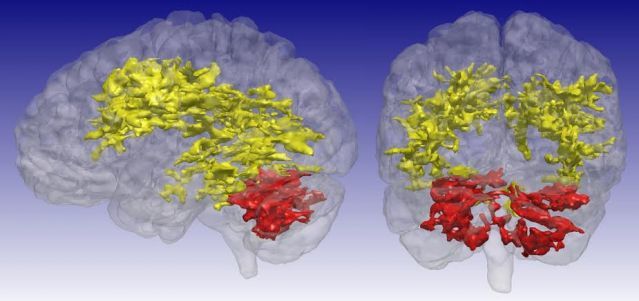
Using a revolutionary MRI technique that is sensitive to certain byproducts of cell metabolism, University of Iowa researchers discovered previously unrecognized differences in the brains of patients with bipolar disorder. The T1rho MRI scans showed brain regions of elevated signal in participants with bipolar disorder compared with study participants who did not have bipolar disorder. The primary regions of difference are the cerebral white matter (yellow) and the cerebellum (red).
Source: Courtesy of University of Iowa
After reading the new ENIGMA meta-analysis this morning, I was curious to learn if the co-authors of the new study had any insights about the role that the cerebellum might play in bipolar disorder. So, I sent the enigma corresponding author in Norway an email. I wrote:
"Dear Ole Andreassen, As I was reading the results of your latest meta-analysis, the potential cerebellar link to bipolar disorder seemed like an "elephant in the room" that I have a hunch might somehow be correlated to your findings.I know that so much of the research on the cerebellum is in its infancy and any conclusions would be speculative at this point. That being said, I'm always curious to hear expert opinions on the role that the cerebellum might play in cognitionand mental disorders. Regarding next steps for creating a "whole-brain" roadmap for BD that includes the cerebellum, I was wondering if you could answer a few questions? I would love to share your answers with my Psychology Today readers."
My questions for Ole Andreassen were as follows:
"I’m curious if your MRI meta-analysis of 2,447 adults with bipolar disorder was able to include any brain mapping studies that looked at the possible role of gray matter volume or white matter integrity in the cerebellum? If so, do you have a hypothesis about the link between cerebellar gray matter brain volumes or the integrity of white matter tracts in specific regions or hemispheres of the cerebellum (such as lobule VIIb) being linked to mental disorders?Also, based on your extensive knowledge of MRI neuroimaging, do you think it's possible that the thinning of gray matter in the cerebral cortex of patients with bipolar disorder in regions of the frontal and temporal lobes might somehow be linked to changes in gray matter volumes within specific cerebellar lobules or microzones?"
Ole Andreassen responded: "Thanks for your insightful questions. We are aware of the lack of information about cerebellum in these analysis of brain abnormalities in bipolar disorder, as well as in other ENIGMA studies of, for example, schizophrenia. I agree that this is an important factor that currently is missing in these large multi centre brain MRI analysis.
Andreassen continued, "To show our interest for the role of cerebellum in severe mental disorders, we have a paper in press from our centre specifically targeting cerebellum in MRI studies of severe mental disorders. I have Cc Lars Westlye and Torgeir Moberget who are leading that effort and have some exciting hypothesis about the specific cerebrum-cerebellum networks. They have more knowledge about the specific questions related to cerebellum."
A few minutes later, Lars Westlye wrote me saying, "Dear Chris, Thanks for your interest. Please find attached our in press paper on cerebellar structure in schizophrenia, Torgeir (Cc) is lead author. The paper is embargoed until publication date, which will probably be within a few weeks."
Cerebellar research is a trailblazing new frontier of neuroscientific study. I will be providing any updates on the aforementioned embargoed paper by Torgeir et al. as soon as possible. Hopefully, these findings will help to answer some of the enigmatic riddles of how cerebellar volume and cerebello-cerebral structural covariance influences a wide range of mental health disorders. Stay tuned!
References
D.P. Hibar, O. A. Andreassen, et al. Cortical abnormalities in bipolar disorder: an MRI analysis of 6503 individuals from the ENIGMA Bipolar Disorder Working Group. Molecular Psychiatry advance online publication 2 May 2017; doi: 10.1038/mp.2017.73
C P Johnson, R L Follmer, I Oguz, L A Warren, G E Christensen, J G Fiedorowicz, V A Magnotta, J A Wemmie. Brain abnormalities in bipolar disorder detected by quantitative T1p mapping. Molecular Psychiatry, 2015; DOI: 10.1038/mp.2014.157
"Structural Alterations within Cerebellar Circuitry are Associated with General Liability for Common Mental Disorders," Adrienne L. Romer, Annchen R. Knodt, Renate Houts, Bartholomew D. Brigidi, Terrie E. Moffitt, Avshalom Caspi and Ahmad R. Hariri. Molecular Psychiatry, April 11, 2017. DOI: 10.1038/MP.2017.5
advertisement
About the Author
More Posts
Find a Therapist
Get the help you need from a therapist near you–a FREE service from Psychology Today.
Cities:
- Atlanta, GA
- Austin, TX
- Baltimore, MD
- Boston, MA
- Brooklyn, NY
- Charlotte, NC
- Chicago, IL
- Columbus, OH
- Dallas, TX
- Denver, CO
- Detroit, MI
- Houston, TX
- Indianapolis, IN
- Jacksonville, FL
- Las Vegas, NV
- Los Angeles, CA
- Louisville, KY
- Memphis, TN
- Miami, FL
- Milwaukee, WI
- Minneapolis, MN
- Nashville, TN
- New York, NY
- Oakland, CA
- Omaha, NE
- Philadelphia, PA
- Phoenix, AZ
- Pittsburgh, PA
- Portland, OR
- Raleigh, NC
- Sacramento, CA
- Saint Louis, MO
- San Antonio, TX
- San Diego, CA
- San Francisco, CA
- San Jose, CA
- Seattle, WA
- Tucson, AZ
- Washington, DC
Are you a Therapist?
